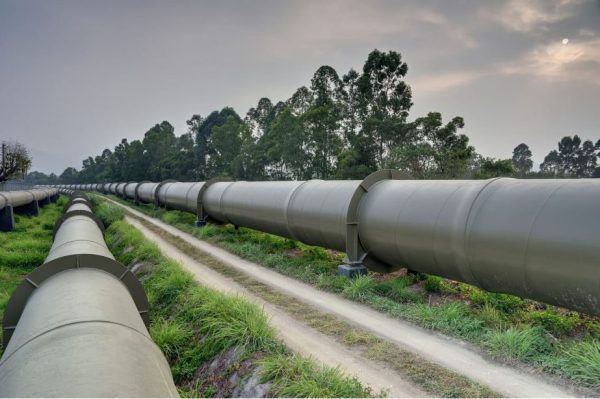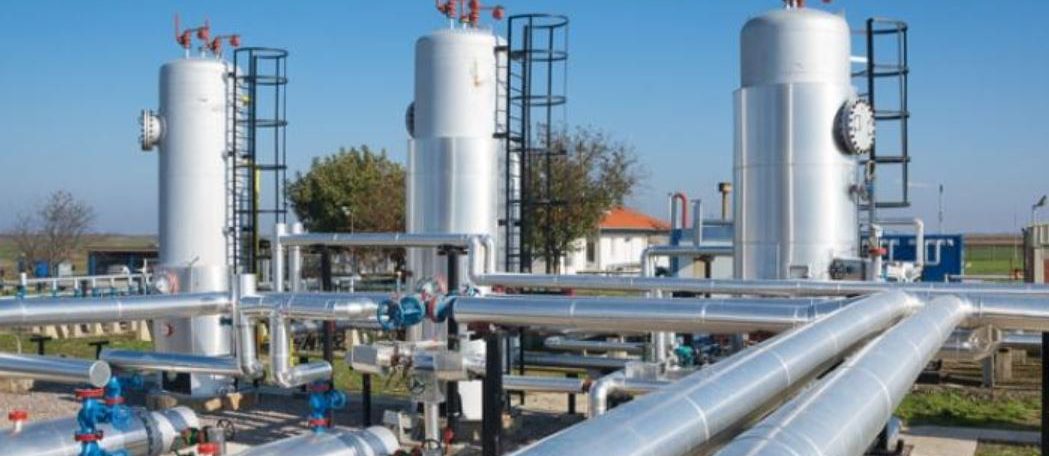This article is about gas utilization projects, gas pipeline projects and gas investment opportunities in Nigeria.
In the beginning, gas production was incidental to oil discovery. Following the discovery of oil at Oloibiri in 1956, the facilities that were built to produce oil did not include gas processing and export units. This lack of utilization plan resulted in the flaring of most of the Associated Gas (AG) produced except for that used as fuel. Gas commercialization and utilization efforts began in earnest with the promulgation of “Associated Gas Framework Agreement of 1991. This agreement provided fiscal incentives to improve the economics of gas utilization projects and was aimed at reducing or eliminating flaring by allowing the Oil companies to offset their capital expenditures in gas projects from oil revenue.
Read: NNPC LTD. TO DELIVER LNG TO DOMESTIC AND INTERNATIONAL MARKET.
Initial gas commercialization programmes focused on the recovery of low and medium pressure gas from oil separators that were hitherto flared. Up till 1999 when the Nigeria Liquefied Natural Gas (NLNG) plant started operations, over 2.8 Bscfd or 74% of associated gas produced in the course of oil production was flared. In recent times, conscious efforts have been made to develop Non-Associated Gas (NAG) wells to ensure reliability of supply as AG production fluctuates with oil production and cannot be used to guarantee gas supply commitments.
This has caused gas utilization in Nigeria to grow over the years from about 1.7 Bscfd in 1995 to 6.4 Bscfd in 2017. Within the same period, routine gas flaring reduced from 2.8 Bscfd in 1995 (74 % of total gas production) to 0.7 Bscfd in 2017 (10 % of total gas production). So far, most of the progress made in the utilization of Nigeria’s gas resource has been largely through conversion to Liquefied Natural Gas (LNG) for export. As a result, growth in gas utilization has not had significant impact on the domestic economy. This is obvious from the 2017 gas disposal statistics which shows that only 10% of gas produced was utilized domestically for power and industry, while 45% was exported as LNG and NGLs, 35% re-injected and about 10% was flared.
GAS UTILISATION PROJECTS
In order to diversify its revenue through gas and reduce the huge wastage of valuable resource as well as the degradation of the environment arising from the flaring of gas, the Nigerian Government, through the Nigerian National Petroleum Corporation (NNPC) in partnership with various Oil companies have implemented a number of laudable natural gas utilisation projects, amongst which are:
Gas-to-Liquid (GTL) Projects
GTL is a refining process that converts natural gas or other gaseous hydrocarbons into longer-chain hydrocarbons such as gasoline or diesel fuel by direct conversion or by using synthetic gas (syngas) as an intermediate through the Fisher Tropsch process. The first project in Nigeria to utilise the GTL technology is the Escravos Gas-to-Liquid (EGTL) plant which is jointly owned by Chevron and NNPC under an equity ratio of 75% and 25% respectively. V EGTL is a two-train plant designed to convert 330 MMscfd of natural gas into syngas. The gas is then chemically reacted over a catalyst to produce 34,000 barrels per day equivalent of environmentally-friendly products. EGTL plant commenced beneficial operation in July 2014 and has capacity to produce 22,100 bpd of GTL diesel, 10,200 bpd of Naphtha and about 1,000 bpd of LPG.
Read: COMPRESSED NATURAL GAS (CNG) AND THE BENEFITS
Liquefied Natural Gas (LNG) Projects
LNG is natural gas (predominantly methane with some mixture of ethane) that has been condensed into liquid, at close to atmospheric pressure, by cooling it to approximately -162oC. The liquefaction process involves removal of certain components such as dust, acid gases, helium, water, and heavy hydrocarbon. LNG only occupies about 1/600th the volume of natural gas in the gaseous state (at standard conditions of temperature and pressure) and this makes it easy to store and transport. NLNG operates a six (6)-train LNG plant which can produce 22 Million Tonnes Per Annum (MTPA) of LNG, and 5 MTPA of NGLs (LPG and Condensate) from 3.5 Billion standard cubic feet per day (Bscfd) of natural gas intake. It is owned by NNPC (49%); Shell (25.6%); Total (15%) and Eni (10.4%). NLNG currently supplies about 40% of the annual Domestic Cooking Gas or Liquefied Petroleum Gas (LPG) consumption requirement.
NLNG Gas Supplier Projects
Feed gas to NLNG trains 1-6 plant comes from various gas producers, namely Shell, Eni and Total. Most of these facilities were purposely built to supply gas to NLNG facilities and they include the following amongst others:
- 25 Bscfd Gbaran Ubie Gas Plant (Shell)
- 04 Bscfd Soku Gas Plant (Shell)
- 21 Bscfd Bonga FPSO (Shell Exploration – PSC)
- 53 Bscfd Obite Gas Plant (Total)
- 45 Bscfd Amenam Production Platform (Total)
- 32 Bscfd Akpo FPSO (Total Upstream -PSC)
- 07 Bscfd Obiafu Obrikom Gas Plant (ENI)
Gas-to-Power Projects
One of the options adopted for gas monetization in Nigeria is Gas to Power (GTP). GTP enables the generation of power by burning natural gas in Gas Turbine Generators (GTGs), either in simple or combined-cycle configurations. Simple-cycle plants use GTGs without heat recovery, while Combined-cycle plants use GTGs and recover the waste heat from their exhaust-gas streams with heat-recovery steam generators to make steam to run steam turbine generators, thus producing additional power. NNPC in partnership with Shell and ENI JVs have separately implemented the construction of two GTPs, namely Afam VI and Okpai Independent Power Plants respectively.
Okpai Independent Power Plant
The Okpai power plant is jointly owned by NNPC (60%) and Eni (40%). It is one aspect of the opportunity for harnessing Nigeria’s natural gas resource. Okpai IPP is based on a combined cycle technology. It has an installed capacity of 480 MW and consumed 120 MMscfd of gas. The plant has been in operation since 2005.
Afam VI Independent Power Plant
SPDC JV built Afam VI power plant in 2008 with an installed capacity of 630MW. It is the second largest thermal power plant in Nigerian and utilises combined cycle gas turbine technology.
Natural Gas Liquid (NGL) Projects
Nigeria, through Chevron, Mobil and Eni and other companies has NGL Extraction Plants which produce mixed LPG, Propane, Butane, Natural Gas Liquids (NGLs) and Condensates for export. Some of the NGL facilities include:
Read: Uses and Benefits of Compressed Natural Gas
Escravos Gas Plant (EGP)
EGP is a two-train gas processing plant with a combined rich gas processing capacity of 680 MMscfd and produces mixed LPG for export and Lean gas for EGTL and Domestic Gas market. The first and second trains were built in 1997 and 2010 respectively.
Oso NGL Plant
Mobil JV operates a two-train 550 MMscfd capacity NGL plant located at its Oso field in the South Eastern part of Nigeria. It started production for export in 1998. The NGLs produced from this facility is piped to Bonny River Terminal for fractionation into propane and butane for export.

GAS PIPELINE PROJECTS
Escravos Lagos Pipeline System (ELPS)
ELPS is the domestic gas supply pipeline network servicing the Western part of Nigeria. It was built by the NNPC in 1989 and comprises mainly 24/36-inch diameter pipeline segments with a total length of 514km. Expansion works are in progress to double the ELPS capacity from 1,100MMscfd to 2,200MMscfd. ELPS provides domestic gas to power plants, local industries and the West Africa Gas Pipeline.
West African Gas Pipeline (WAGP)
WAGP comprises 20/30-inch diameter pipeline segments with a total length of 678km and a capacity of 180 billion cubic feet (Bcf) of natural gas per year. It supplies gas to some ECOWAS countries including Ghana, Benin and Togo from two Nigerian gas producers, namely Chevron and Shell. The pipeline is owned by West African Gas Pipeline Company Limited (WAGPCo), with equity distribution of Chevron (36.7%), NNPC (25%), Shell (18%) VRA (16.3%), SoToGaz (2%), SoBeGaz (2%).
Read: Construction Of Nigeria-Morocco Gas Pipeline Project Begins In 2024
GAS INVESTMENT OPPORTUNITIES
Nigeria has the 9th largest proven natural gas reserve of over 192 trillion cubic feet (DPR, 2016), made up of 51% Associated Gas (AG) and 49% Non-Associated Gas (NAG). However, Nigeria ranks 28th in terms of natural gas production. This simply means that we are yet to fully harness the benefits derivable from our natural gas resource. The Nigerian government since 2008 has been making concerted efforts to develop the domestic gas sector through special budgetary provisions in line with the objectives of the National Gas Master Plan. Hence, from 2008 to 2017, over US$12 billion was provided under the DomGas/JV IPP Ring-fenced Budget to develop both upstream and midstream gas supply and processing facilities. The current aspiration of government is to increase domestic gas monetization to 5 Bscfd by 2020 and expand pipelines. Consequently, there is still a lot of room for investment in areas like the construction of Central Processing Facilities, Independent Power Plants, Natural Gas Liquid Recovery Plants, Methanol Plants, Fertilizer Plants, and Domestic gas supply to local industries.
Domestic Gas market
The Nigerian domestic gas market is regulated and most of the domestic gas supply pipelines are owned by NNPC. However, these facilities are inadequate for effective distribution of gas nation-wide. Consequently, NNPC in joint venture with some investors is developing the following pipeline extension projects, amongst others:
- Aba-Owerri-Nnewi-Onitsha Pipeline Project;
- Calabar-Ajaokuta Pipeline (CAP) Project;
- Ajaokuta-Kaduna-Kano (AKK) Pipeline Project;
- ELP-Ibadan-Jebba Pipeline Project;
- Obiafu-Obrikom-Oben (OB3) Pipeline Project;
- Expansion of ELP Phase 2 Project;
- Oso Platform to QIT Pipeline Project;
- Erha / Bosi Pipeline Project

